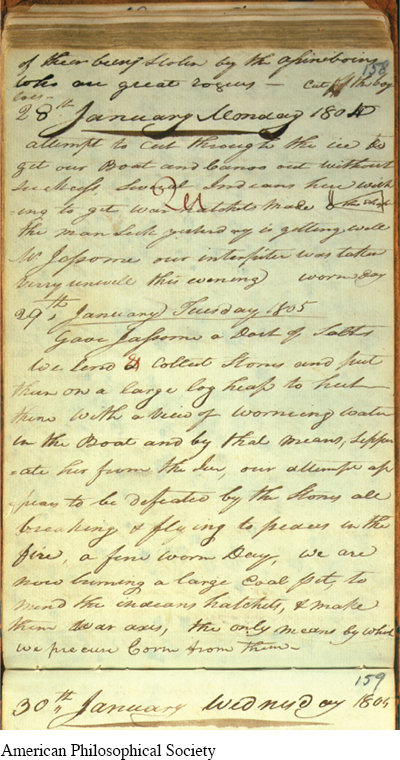Document 8.8
William Clark | Journal, January 28, 1805, and Meriwether Lewis, Journal, February 1, 1805
By early 1805 it was clear to Lewis and Clark that metal goods, especially axes or hatchets, were the most valuable means of obtaining the corn and other items they needed from the Mandans and neighboring Indians. These two short entries, by Clark and then Lewis, describe the value of the trade in hatchets to the Corps and their continued commitment to peace among Indian nations.

28th January
Attempt to cut through the ice to get our Boat and Canoes out without success. Several Indians here wishing to get war hatchets made [image of one drawn here]. The man sick yesterday is getting well Mr. Jessome [Jessaume], our interpreter was taken very unwell this evening. Warm day.
1st February
A cold, windy day…. One of the Minnetaree chiefs…came to see us and procure a war hatchet; he also requested that we would suffer him to go to war against the Sioux and Ricaras, who had killed a Mandan some time ago; this we refused for reasons which we explained to him. He acknowledged that we were right, and promised to open his ears to our counsel.
Source: William Clark Journal, January 28, 1805, Codex C: 158 American Philosophical Society, Courtesy of the American Philosophical Society Library; and Meriwether Lewis Journal, February 1, 1805, History of the Expeditions of Captains Lewis and Clark, 1804-5-6, Reprinted from the Edition of 1814, with Introduction and Index by James K. Hosmer (Chicago: A. C. McClurg, 1902), 1:168.